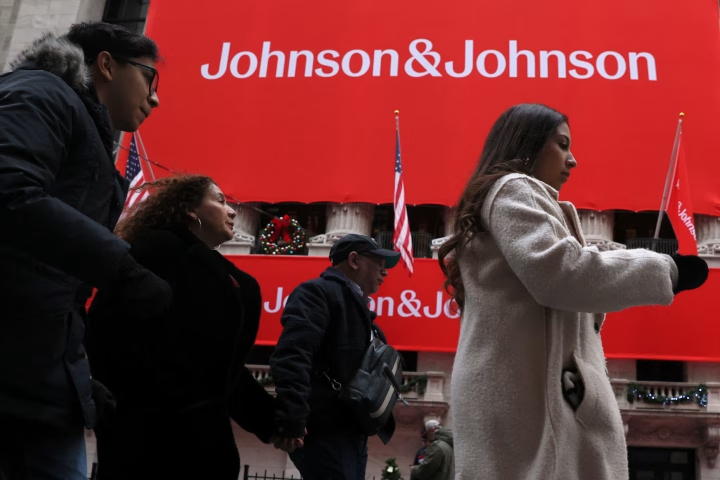It began with silence — the kind that precedes a revolution. Inside the prestigious United Nations Conference Hall on October 24, 2025, two teenagers walked to the podium, faces illuminated by the soft glow of cameras and anticipation. Their names, Ruihang Zhang of California and Eirene Hope Liu of New York, were unfamiliar to most of the attendees. But within minutes, their words would disrupt decades of environmental diplomacy with a simple, searing challenge: if the planet’s future is truly at stake, why aren’t young people the ones writing the blueprint?
The Moment That Shook The Room
Under the banner of the U.S. Youth Leaders Organization (YLDO), and backed by the World Harmony Foundation, the duo unveiled the Waste-Free Planet Action Initiative during the UN’s 80th Anniversary Summit. It was no mere statement of hope. It was a structurally defined, four-pillar plan calling for radical reductions in waste, a redefinition of “green living,” and the creation of compostable materials to replace plastic worldwide. “Change starts with young people, and action starts now,” Zhang and Liu told delegates, their voices unwavering.
In that very moment, she and Zhang synthesized what many diplomats and scientists have struggled to articulate — a tangible global response to the accelerating environmental crisis. For the World Harmony Foundation (WHF), a New York-based nonprofit long known for bridging international youth leadership and environmental stewardship, it was more than a shared victory. It was the public manifestation of a mission they have quietly pursued for decades: empowering the next generation to move environmentalism from rhetoric to reality.
A Foundation Rooted In Global Responsibility
World Harmony Foundation’s trajectory is atypical within the crowded field of environmental advocacy. Founded in the early 2000s by international peace advocates, WHF operates at the intersection of youth engagement, sustainability innovation, and diplomatic collaboration. Rather than acting as a traditional nonprofit confined to awareness campaigns, it positions itself as a cultural intermediary — a conduit through which governments, UN agencies, and young innovators can jointly develop and implement feasible environmental solutions.
At the organization’s headquarters in New York, the ethos is straightforward. “Our mission,” explained a WHF spokesperson, “is not only to protect the planet but to harmonize humanity’s pursuit of advancement with nature’s limits. We believe that environmental security is the foundation of world peace.” That belief has guided WHF through partnerships with the United Nations Environment Programme (UNEP), the Global Water Alliance, and many other youth-led networks across Asia, Europe, and the Americas.
What differentiates WHF is its long-term strategy. While many organizations focus on short-term campaigns or policy lobbying, WHF cultivates cross-generational dialogue through education and art. Its ongoing initiatives include global youth summits, sustainability art exhibitions, and diplomatic forums designed to educate and empower students at a formative stage. The foundation’s leadership sees these cultural connections as essential to the systemic transformation required for a truly waste-free world.
Their strategic vision gained renewed momentum with Zhang and Liu’s UN presentation, which WHF supported both ideologically and logistically. “We recognized in their proposal something rare,” the spokesperson continued. “It wasn’t just activism — it was an actionable roadmap rooted in science, youth ingenuity, and civic accountability.”
The Rise of The “Waste-Free Planet” Blueprint
The Waste-Free Planet Action Initiative introduced by Zhang and Liu greatly represents what industry observers are calling a shift from environmental awareness to operational reform. Its four significant pillars — reduce and refuse, strengthen recycling, innovate and recreate, and global collaboration — translate the moral imperative of sustainability into something more tangible and clearer.
The initiative’s centerpiece, the call for organically biodegradable water bottles made from agricultural waste, directly addresses one of the most pressing challenges in the industry: single-use plastics (SUPs). According to WHF, global plastic production currently exceeds 400 million tons annually, with microplastics infiltrating every major ecosystem and even the human food chain. The proposed innovation aims to dissolve this dependency at its source.
“This generation doesn’t see environmentalism as optional,” Zhang affirmed when speaking about the project’s goals. “We view it as an ethical baseline for civilization’s survival.” His words reflect a generational urgency that environmental organizations, including WHF, are increasingly acknowledging as critical to progress.
For the broader sustainability sector, WHF’s involvement is strategically symbolic. It underscores the nonprofit’s unique role as both facilitator and amplifier, linking high-level global agendas with grassroots youth ingenuity. Within weeks of the UN summit, the foundation reported an upsurge in inquiries from partner institutions in Europe, Asia, and the Middle East seeking to replicate aspects of the initiative. In the often sluggish machinery of international environmental policy, such response rates are rare and telling.
From Symbol To System: The Industry’s Inflection Point
The growing resonance of WHF’s youth-backed model comes at a critical juncture. Environmental organizations worldwide face donor fatigue, fragmented policy priorities, and mounting skepticism about the real-world impact of climate commitments. Yet, WHF’s ability to transform symbolic expressions, such as art, culture, and youth activism, into diplomatic outcomes offers a compelling counter-narrative.
At the close of the UN event, Zhang and Liu presented a hand-painted work — a vibrant depiction of Earth’s regeneration — as a commemorative gift to the United Nations. For WHF, this was not just a ceremony, but a demonstration of its methodology: bridging creative expression with global governance. In the foundation’s view, art carries emotional weight that policy language cannot, inspiring empathy where data alone cannot persuade.
“The environmental challenge is not a technical problem alone; it’s a cultural one,” explained a representative from WHF’s international committee. “Technology can solve pollution. But only collective imagination can build harmony.” It is this philosophy, marrying the empirical with the emotional, that defines the organization’s distinct place in the environmental movement.
As calls for accountability in climate action intensify, WHF has positioned itself not on the periphery of policy but at its moral center. Its focus on empowering young people through global stages, such as the UN’s, signals a widening paradigm: where youth are not the audience of change, but its architects.
A Future In Synchrony
In the weeks following the UN summit, the Waste-Free Planet Action Initiative has attracted growing global interest, bolstered by endorsements from environmental agencies and philanthropic leaders. Yet, WHF’s leadership remains measured. “This is just the first wave,” a foundation representative reflected. “What matters now is implementation, building the systems to make our waste-free vision irreversible.”
For the World Harmony Foundation, the path ahead is both pragmatic and philosophical. Their strategy is not only about reducing waste, but also about redefining harmony between economies and ecosystems, humans and the natural world, and innovation and compassion. From their vantage point, the most profound environmental transformation will come not through mandates, but through mutual understanding.As the foundation’s motto continues to resonate across diplomatic circles, one statement succinctly captures their ethos: “Sustainability is not an act of compliance; it’s an act of humanity.”








